Agency Insights: What It Is & How to Get Started

Your enterprise client is struggling to maintain brand consistency in their marketing assets.
They’re looking for a custom solution as their complex needs have outgrown Google Drive and Dropbox.
Now that’s interesting.
Because this is the third client in a month requesting your help to build a digital asset management (DAM) tool.
Clearly, there’s a demand.
You have a light-bulb moment: enterprises with multiple customer-facing channels require a sophisticated storage system to create a consistent omnichannel experience for consumers.
In response, you offer DAM tools as a new service offering. See what just happened?
By drawing these insights from your client collaborations, you gain a better understanding of your customers’ frustrations, offer aligned solutions, and maximize your agency’s revenue.
Today, we’ll share more why agency insights matter and the metrics to get you started, complete with a step-by-step tutorial on using DashThis to streamline your agency reporting.
- Understanding Agency Insights in 30 Seconds
- Why Distilling Insights From KPIs and Metrics is Crucial for Agencies
- Top Agency KPIs and Metrics to Track Across the Funnel
- How to Track KPIs That Matter Most to Your Agency with DashThis
- 3 Best Practices to Maximize Your Agency Insights on DashThis
- Automate Your Agency Reporting With DashThis Today
Understanding Agency Insights in 30 Seconds
Agency insights are strategic learnings distilled from your agency’s performance (KPIs and metrics), industry trends (external events like AI and COVID-19), or partnerships with clients (pain points and challenges).
This guide will primarily focus on key performance indicators (KPIs) and metrics, since they often hold the answers.
Why Distilling Insights From KPIs and Metrics is Crucial for Agencies
Setting your agency KPIs and blindly tracking metrics without understanding their significance leads to a vague path of action. Here, we make the case why insights matter.
Boost agency performance and efficiency
Insights inform strategic actions.
Note how the agency dashboard below quickly compares metrics across different periods. The lackluster number of sales qualified leads (SQLs) shows an issue in the sales process.
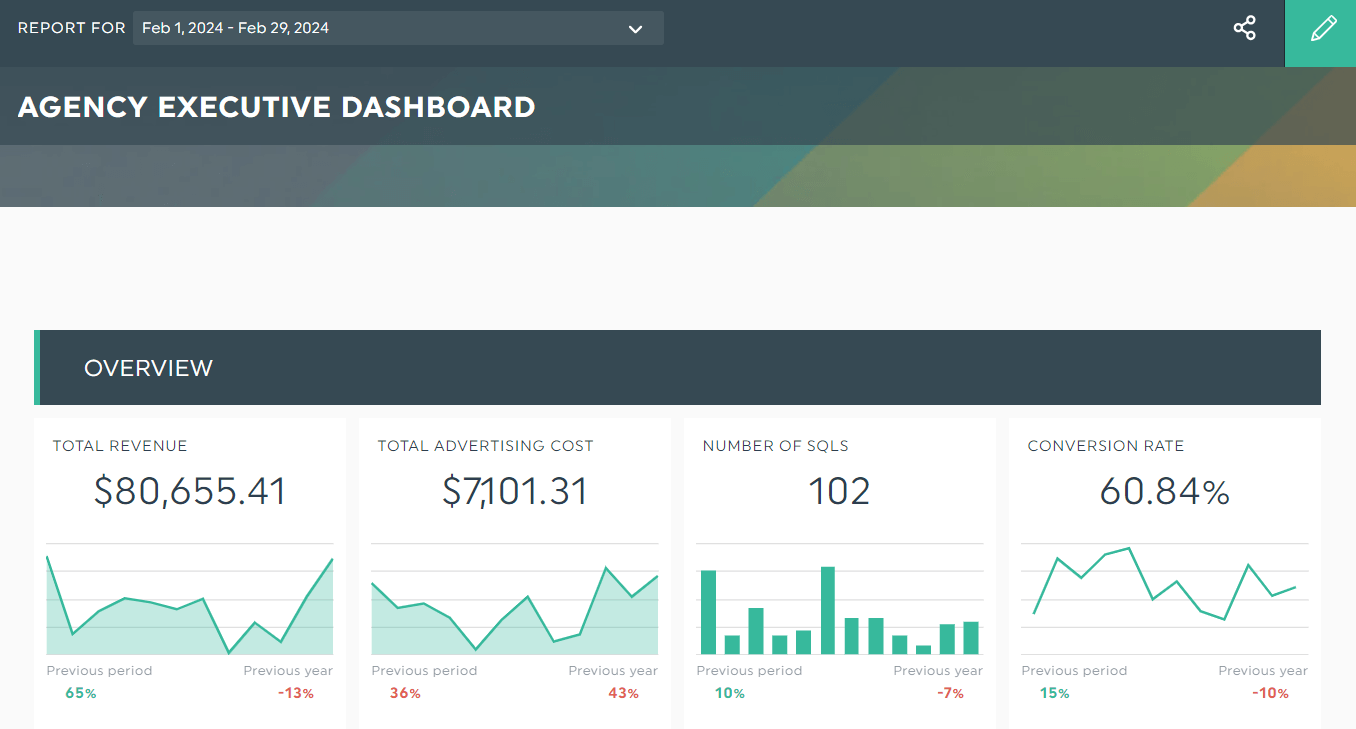
We might assume the BD team is struggling to qualify leads and frequently resorts to randomly selecting them. To identify qualified leads, we might invest in a lead scoring system and track if the number of SQLs improve over time.
Improve customer satisfaction to ensure long-term client retention
KPIs are only valuable when they lead to actionable insights.
But what happens when clients struggle to implement them?
That’s the situation Juris Digital found itself in.
“Clients had difficulty understanding our SEO audits,” shares CEO Casey Meraz with DashThis. “They appreciated the comprehensive reports but found them too complex.”
Fortunately, a quick revamp of the report solved it.
Meraz and his team added step-by-step guidelines and visual aids to better highlight their data-driven marketing insights. They also offered additional consultations to follow up with clients.
The effort paid off, says Meraz.
“Our client satisfaction scores rocketed by over 31%.”
Spot growth opportunities right on time
A deep dive into your latest trends not only identifies the areas that perform best but also those that need work.
Take Sixth City Marketing, for instance.
The digital marketing agency, suspecting that some page formats were more successful than others, installed a heat mapping software to gain insights into user navigation patterns on its site.
“Our hunch was correct,” says CEO John Sammon.
“We’re now running different A/B tests to collect granular data on our page formats and their conversion rates.”
Just a few days after implementing a new page layout, one of the previously underperforming pages has already generated two new leads.
Top Agency KPIs and Metrics to Track Across the Funnel
Before you extract insights and plan your next move, you need to determine the KPIs and metrics that matter most to your agency. Use this list as a starting point if you don’t know where to begin.
Client acquisition metrics
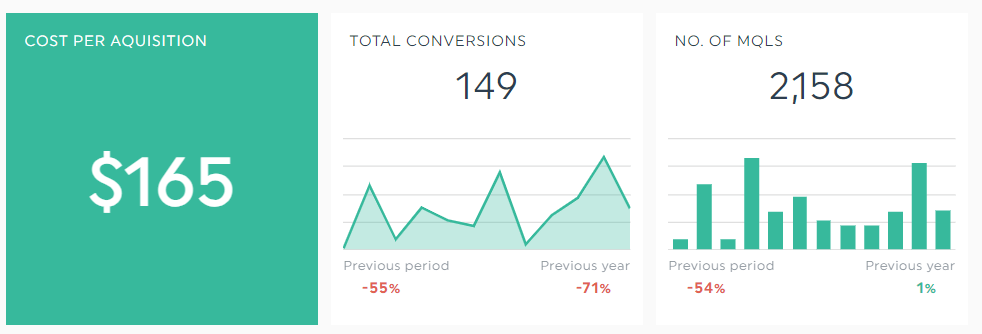
- Number of conversions
- Conversion rate
- Cost per acquisition
- Number of marketing and sales qualified leads
- Number of product qualified leads (for product-led growth startups)
Client acquisition metrics gauge your ability to attract leads and convert them to paying customers.
Customer research is the backbone of every successful acquisition strategy.
When Alison Lancaster analyzed lead trends for her PR agency, Pressat, she noticed her highest-converting leads shared a common jobs-to-be-done that wasn’t clearly addressed in the top-of-the-funnel messaging.
“We made some quick landing page copy tweaks, added a well-placed client testimonial, and repositioned our solution as the antidote to this particular pain point,” says the co-founder.
“Lead volumes increased by double digits practically overnight.”
Client retention metrics
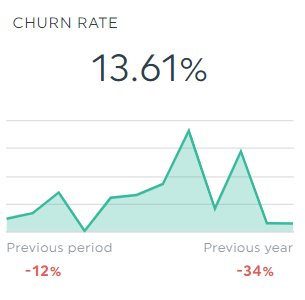
- Churn rate
- Client satisfaction score
- Retention rate
- Customer lifetime value
- Repeat purchase rate
Retention metrics provide insights into how well you engage and retain clients.
For one marketing agency, communication frequency impacts its client satisfaction score and retention.
“Clients who receive regular updates from us are more likely to continue working with us in the long term,” reveals Marcus Clarke, co-founder of Searchant.
In response, Clarke carried out a more structured communication plan to engage clients throughout the partnership. “This strategy strengthened our relationships as partners.”
For Dan Ben-Nun, there’s no metric more important than churn rate.
“You can scale the team, you can streamline the processes, and you can apply the latest trends,” says the founder and CEO of Adspace. “But all of that is worthless if incoming funds are cut off.”
Experiment with different client retention strategies to improve your churn rate. In Ben-Nun’s case, sending clients ad-hoc updates achieves the best results.

Ad-hoc updates outperform discounts and weekly updates
Why did ad-hoc updates perform better than weekly updates?
We think it’s because clients feel seen and heard.
“We asked clients how exactly they wanted to receive the updates,” adds the CEO. “Some said they don't want any communication at all. Others asked for updates twice a week. And we accommodate that.”
Operational metrics
- Project completion rate
- Machine utilization rate
- Employee utilization ratio
Operational metrics improve behind-the-scenes workflow.
It determines whether your time and resources are efficiently used. That way, you can maximize output, free up unnecessary manual tasks, and focus more on revenue-focused activities.
Machine utilization rate, for instance, measures how much time your machine is being used (e.g., card reader, desktop). A low utilization rate usually signals the machine is faulty or rarely used.
Whereas employee utilization ratio tracks how long an employee spends on billable work (e.g., completing revision requests) v.s. non-billable activities (e.g., training your team to use a new reporting tool).
Lancaster focuses primarily on project completion rate in her PR consultancy.
“How can we dazzle clients if our internal gears aren't running smoothly?” asks the CEO and co-founder. “This intel illuminates where we might drop the ball on deadlines or over capacitate our team. Small process tweaks in these areas can have an exponential downstream impact.”
Financial metrics
- Gross margin
- Net profit
- Burn rate
- Revenue growth
- Profitability by client
- Monthly recurring revenue
- Annual recurring revenue
Financial metrics are perhaps the most important in your agency—they tell you how much money is going in and out.
Implement the acquisition and retention tactics above to improve your financial performance. And of course, keep the operational expenses under control.
To identify your most profitable clients today, consider using a fully featured contact scoring platform. Tools like Breadcrumbs.io gather all customer data into one place, surfacing the specific attributes (e.g., industry, job titles) that impact revenue.
How to Track KPIs That Matter Most to Your Agency with DashThis
You need a new marketing reporting tool if your team struggles to use it in their workflow.
Remember the non-billable hours mentioned earlier? You definitely don’t want them spending too much time learning it!
DashThis is the easiest agency reporting tool.
Automatically gather all your marketing data into a beautiful report.
Our tool integrates with all major marketing platforms. SEO, email, social media, you name it (tip: if you can’t find a platform you’re looking for, simply upload your custom data). Easily create an agency business executive report or an all-in-one marketing dashboard in one place.
Here’s how it looks like when you create an agency KPI dashboard on DashThis:
- Select a free template
- Connect your marketing channel(s) from 40+ data sources
- Pick your agency metrics in Preset Widget
DashThis will automatically grab the metrics you selected into the dashboard. Drag and drop the auto-created graphs and charts as you desire.
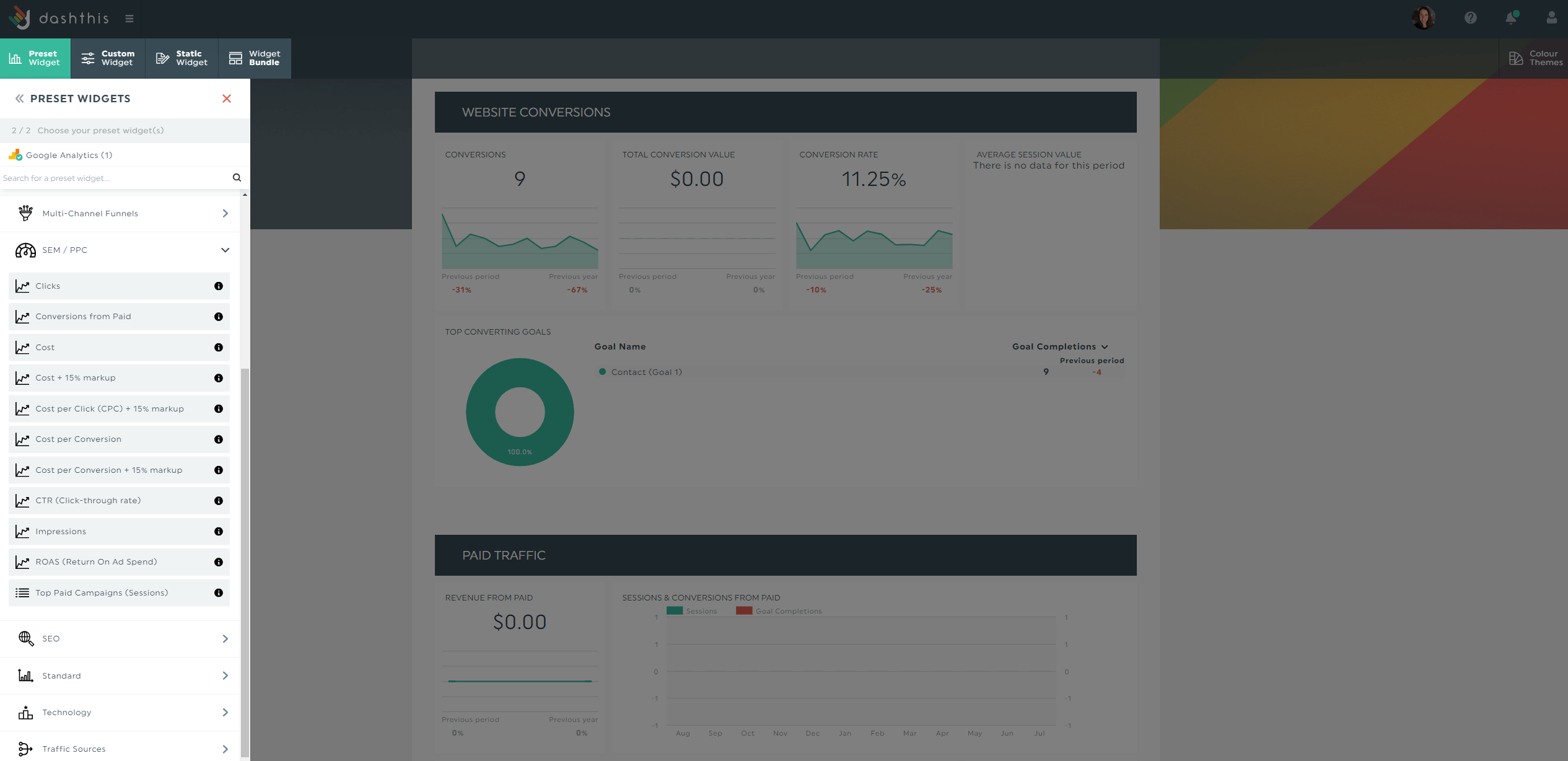
Tailor the dashboard to fit your agency’s needs. Upload a new logo and select a different color theme. Or reflect your branding with our white-label option (includes custom domain name and email address).
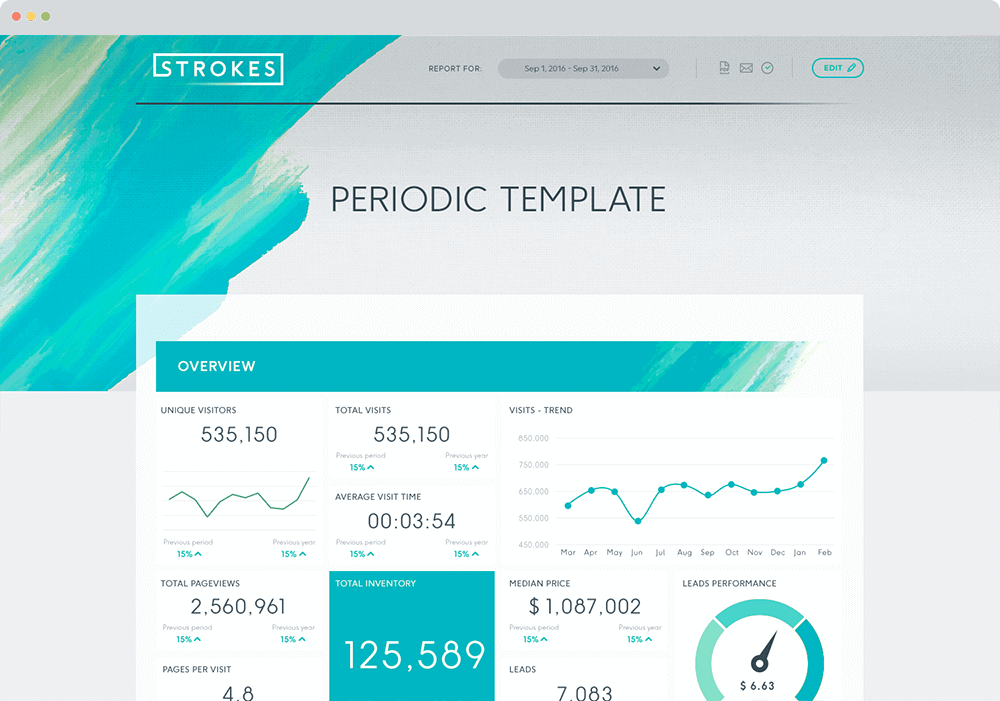
Add a comment directly in the report to summarize the latest insights or make your case for the next marketing strategy.
Suppose you want to convince the VP of marketing to invest in a backlink strategy to maintain top rankings for your most profitable keyword terms. Or you want to promote your case studies and webinars on LinkedIn Ads.
Click Static Widget > Add Comment.

Click Save.
Alternatively, provide contextual information via the notes widget.
Say you want to explain the recent surge in your podcast listeners resulted from influencer marketing. Hover to the metric and click Add Note.
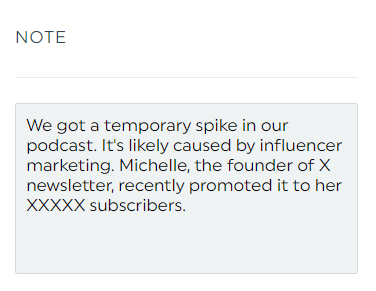
Click Save.
Business executive report
Justify your marketing efforts with this business executive report. It breaks down your total acquisition costs right down to revenue by source and more.
Based on these numbers, you can quickly identify your best-performing channels and double down on them in the next campaign.
Customize it to fit your agency’s or client’s needs.
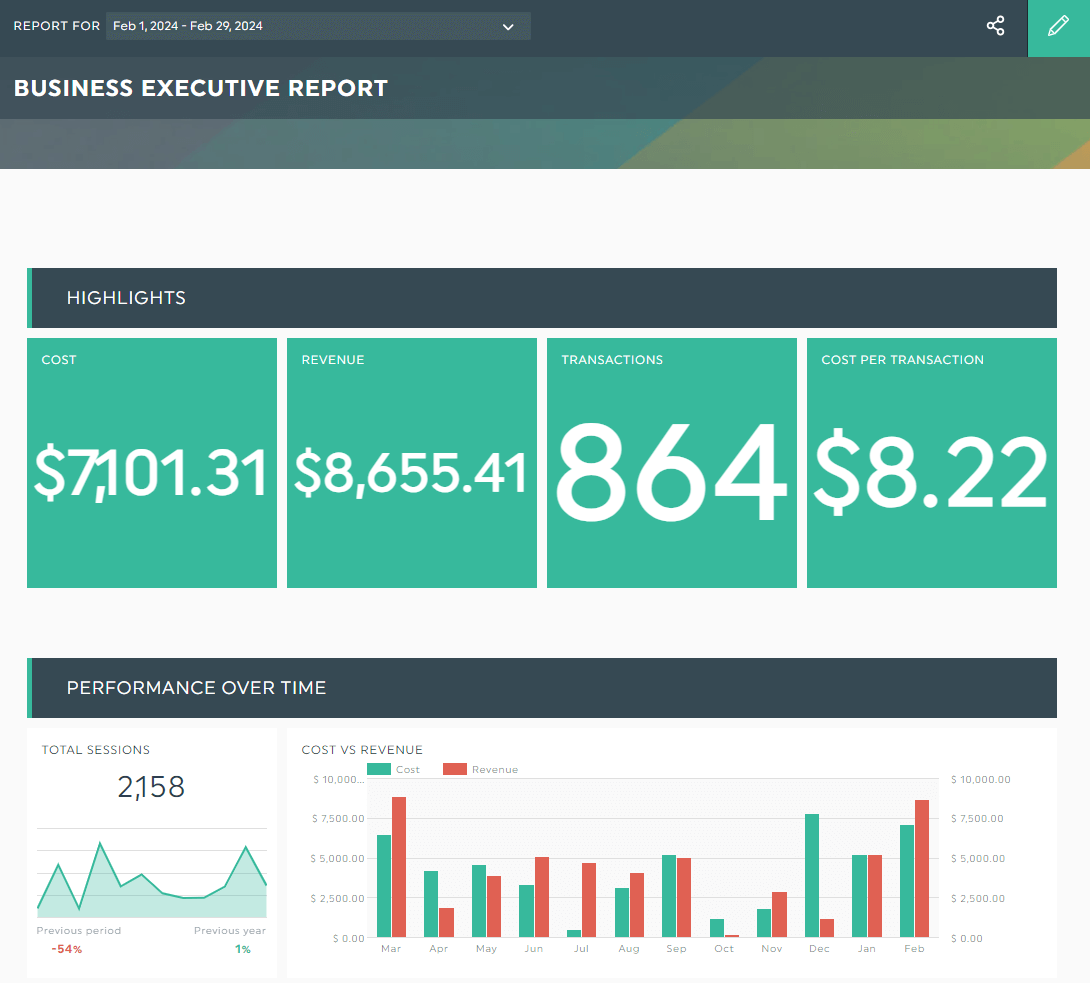
Grab this agency insights report template with your own data!
3 Best Practices to Maximize Your Agency Insights on DashThis
If you’re new to using a reporting tool, here are three best practices we recommend.
(i) Use multiple integrations for a clearer strategy overview
The average marketer uses over 12 different tools to manage their campaigns and data.
That’s overwhelming.
The solution is to integrate all tools in a single report, so you don’t need to click through multiple tabs to access your data.
By connecting your entire marketing data deeply in a single interface, you have a clearer view of what works (and what doesn't) across different channels, campaigns, and content.
(ii) Review and update regularly
Report automation works on a “set it and forget” mode—it ensures clients never miss their reports and helps you gain back valuable hours of your time.
Schedule an automated email after customizing the report.
Here’s how it works:
- Hover to the Sharing Options icon on the top right
- Click Share by Email
- Set the dashboard period and frequency
- Click Schedule
Fill in the remaining fields, and click Send.
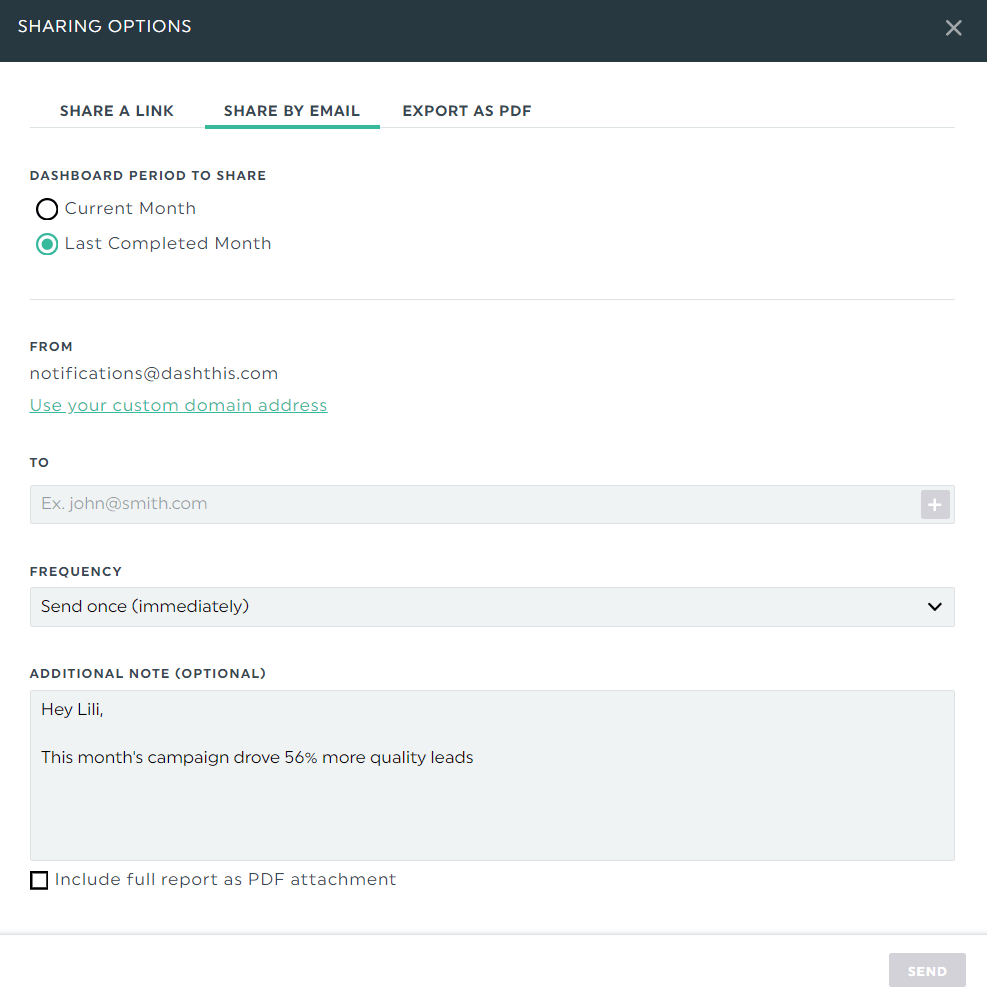
Clients will receive the report according to the predetermined period.
(iii) Collaborate through shared dashboards
Too much information overkills.
A better approach is to break down your long report into micro reports and link them all together in a single interface.
Notice how we group the PPC, acquisition, and SEM reports below? They’re all displayed horizontally in different tabs.

This approach is ideal if you work with stakeholders across the ladder.
C-suite executives will likely click the second dashboard to monitor the total costs of acquiring new customers.
Whereas the marketing team will want to zoom into their organic search and paid advertising efforts in the PPC and SEM reports.
Automate Your Agency Reporting With DashThis Today
Insights provide a clearer picture of your clients and what’s happening in your agency. Set your KPIs, measure your metrics, and generate them before planning your next move.
DashThis is the easiest reporting tool. Automatically gather your entire data across multiple channels into one beautiful report. Pricing starts at $42/month when billed annually. Start your free 15-day trial today.
Ready to track your agency insights?
Read More

Don’t miss out!
Automate your reports!
Bring all your marketing data into one automated report.
Try dashthis for free
